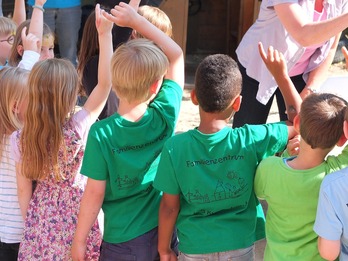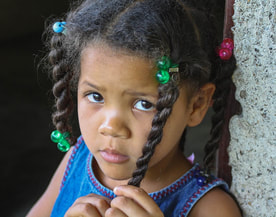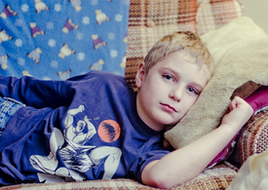Why Ella's Way?
While middle and high-schools have implemented anti-bullying programs, there are limited programs available to address bullying prevention for the young child. Children often become targets of bullying when they are perceived as being different. Those who fall into the roles of bully or bully targets are at higher risk for truancy, mental health challenges, drug or alcohol abuse, violence and even suicide. The effects of bullying are serious and life-changing.
Stages of Child Development
|
PRESCHOOLERS (ages 2.9-6 years) are starting to form friendships with other children. They begin to use language to express their needs and to relate to others. They need a balance of quiet play, active play, group play and individual time. Preschoolers need opportunities for choice, accessible materials, to be involved in appropriate activities, opportunities to increase language and other skills, to learn to interact with peers, and consistent and supportive responses from adults.
|
SCHOOL AGE CHILDREN (ages 6-14 years) can do many things for themselves, but still need adult supervision. They can express themselves, understand and obey rules, take care of supplies or equipment and belongings. After school, this age group needs time to relax, play, and interact with peers. They begin to form close friendships but choose friends that are more like themselves. They have the ability to use words and actions to hurt others and need adult reminders about appropriate behavior.
|
Introducing the concepts of diversity and disability to the preschooler sets the stage for long term acceptance of differences, which is the KEY to bullying prevention!
What is Bullying?
|
Bullying is a form of intimidation or domination toward someone who is perceived as being weaker. It is a way of getting what one wants through coercion or force. Bullying is also a way to establish perceived superiority over another person. While some may think that bullying consists only of physical domination, there are verbal and emotional forms of bullying as well. Generally, boys prefer to use physical intimidation tactics in their bullying. They will use physical aggression to force others to do what they want, or to feel in charge of a situation. Girls, however, are more likely to use more subtle methods of bullying such as verbal abuse. Girls are also more likely to emotionally bully by ostracizing their victims or finding ways to harass or belittle others. |
|
|




